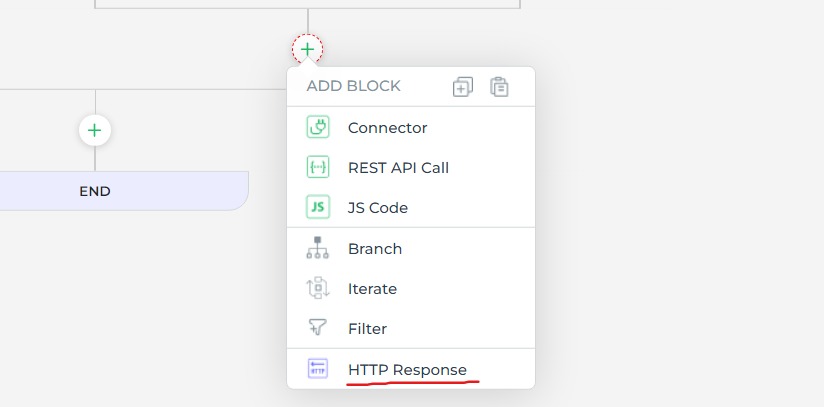HTTP Response
The Automation Block known as HTTP Response is a powerful addition to DronaHQ’s automation capabilities, offering enhanced control over responses in webhook automation. This feature empowers developers to manage and customize interactions with external systems, such as webhooks and APIs, in a more flexible and controlled manner.

Http Response will only execute if the Trigger is set to Webhook mode.
Customized Responses
The HTTP Response block allows users to craft their own responses with precision. Users have the option to define the desired HTTP status code and a JSON response body to be returned. This flexibility enables you to include any data from the workflow as needed, providing a tailored and user-friendly experience.
Flow Termination
In automation workflows, it's essential to have definitive endpoints to ensure precision and prevent unintended consequences. The HTTP Response block serves as an elegant solution for this, as it acts as the termination point for the automation flow. Once configured, no further actions are executed, ensuring that processes end precisely as intended. This reduces potential risks and increases system reliability.
Effortless API Conversion
DronaHQ’s HTTP Response block also unlocks the capability to seamlessly convert webhook-based automation into lightweight APIs. This transformation streamlines integration with external applications, making it easier to exchange data and interact with diverse platforms. Organizations can expand the usability of their automation, reaching new levels of productivity by seamlessly integrating with third-party services, cloud platforms, and more.
Error Handling and Data Acknowledgments
Effective communication is vital for maintaining trust and transparency with users. The HTTP Response block enables developers to manage error messages and data acknowledgments effectively. Users can be promptly informed about the success or failure of their requests, guiding them through the process or providing assistance when needed. This enhances user satisfaction and significantly reduces support-related queries.
Practical Example
Consider an e-commerce automation scenario: when a customer places an order through the website, a webhook triggers an automation flow to process the order. The HTTP Response block allows the automation builder to generate a custom response back to the website, confirming the successful order processing, including an order ID and estimated delivery date.
